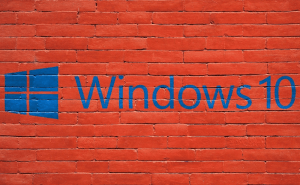 Evolution of Apple Watch and watchOS
Evolution of Apple Watch and watchOS
Even though it started out as nothing more than a gimmick, Apple's WatchOS has always been the best selling wearable on the market. However, the latest versions of the device have actually begun being less of an overpriced accessory and more of a really useful gadget. The recently unveiled Apple Watch Series 4 is no exception, bringing noticeable improvements to the series. If you want to know more, here's how the Apple Watch and WatchOS have evolved:
The first version of the Apple Watch was unveiled in September 2014 and the product started shipping out several months later in April 2015. As far as features went, the wearable was capable of showing you notifications and allowing you to quickly respond to texts directly from the watch. Furthermore, if you would have started typing a message on your iPhone, but then needed to free your hands, you could pick up on your watch right from where you left off. Of course, it also included several faces to choose from and some fitness-related features, but nothing the iPhone couldn't do. However, the biggest problem and the reason why most considered it to be a gimmick was that the original Apple Watch was completely reliant on the iPhone. Basically, it was a complementary device, but one that offered the same features.
Fortunately, while the Apple Watch Series 2 mostly bought cosmetic changes, the third series finally added the ability to make calls from your watch even if your iPhone wasn't right by your side. The device uses a so-called e-card, which is basically an embedded SIM that pairs with the one from your phone. This helps its users make and receive phone calls as well as send or receive texts completely independent from their phones. Moreover, the e-card is also able to take advantage of cellular data and use it for the streaming services available on the watch.
Finally, the Apple Watch Series 4, which was just announced this week, comes with even bigger improvements. For starters, the IT giant's engineers have found a way to create larger displays while keeping the same chassis and actually making the case thinner. A really cool thing is that this is the first mainstream smartwatch to embed EKG capabilities. Additionally, the new Watch Faces are also larger and more information is accessible to the users at a glace. Another cool novelty is the embedded speaker, which is 50% louder than in the previous versions; this makes it more convenient for the wearers to take phone calls or engage Siri from their wrists. Lastly, the digital crown on the side of the watch now includes a haptic response that imitates that click made by classical watches, which is oddly satisfying. The prices for the new Series 4 Apple Watch start at $399 and go up depending on the size of the device and the material that it's made from.
As you can see, the Apple Watch has evolved considerably even though it only had just a few years of existence. Actually, I think that now we can safely say that even though there are cheaper alternatives to the Apple Watch, none of them can actually fully replace the device.




